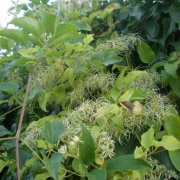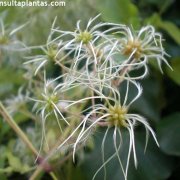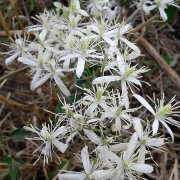Care of the climbing plant Clematis vitalba or Old man's beard |
|
The genus Clematis, family Ranunculaceae, includes 200 species, and numerous varieties and hybrids, of climbing plants of cosmopolitan distribution. Some species are: Clematis vitalba, Clematis flammula, Clematis montana, Clematis armandii, Clematis tangutica, Clematis x jackmanii (hybrid), Clematis japonica, Clematis viticella. Common names: Old man's beard, Traveller's joy. This species is native to Australia. They are fast growing deciduous climbing plants that reach 20 meters (65.6 ºF) in length. The leaves are formed by oval leaflets with pointed ends. They produce abundant white flowers. They bloom in spring. Its feathery fruits are also decorative in autumn. They are used next to watercourses, to cover fences and walls, in undergrowths and as slope coverings in wet areas of the garden. They need supports to climb. Clematis vitalba prefers a semi-shade exposure if the summer is very hot (Mediterranean climate) and full sun if the summer is cooler. They resist frost down to -15 ºC (5 ºF). They are capable of growing in almost any type of soil, even poor or clay soils but prefer a garden soil with some organic matter. Planting is done at the beginning of spring at the rate of 1 or 2 specimens per square meter. They do not tolerate transplants well. Water frequently so that the substrate always has moisture as it does not resist drought. Fertilize with compost or manure in late winter or early spring. Prune in late winter to control growth and promote flowering; they tolerate light or heavy pruning. They are very resistant plants to the usual pests and diseases. They propagate by layering or by cuttings in summer; the new plants are planted in the fall in their final location. |
Images of the climbing plant Clematis vitalba or Old man's beard |
Find plants
Clematis vitalba or Old man's beard | Care and Growing
© 2024 FavThemes


